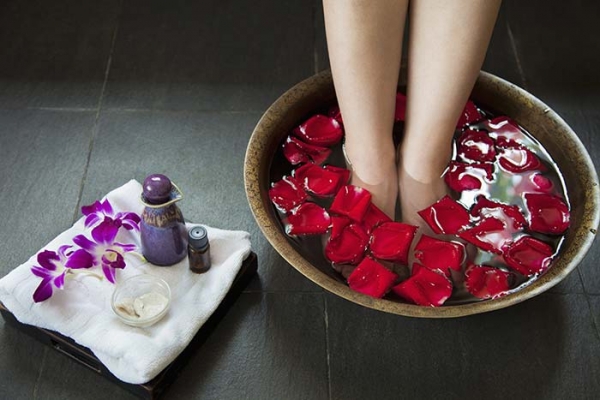Common Foot Problems that May be Ailing You
Do you feel like there’s something wrong with your foot? It’s sore or itchy, but you just can’t seem to figure out what the problem is. Then it may be time for you to seek counsel from your podiatrist.
But before you book a consultation, here are some of the most common foot problems and what you need to know about them.
Plantar Warts
Plantar warts are hard, grainy growths that tend to appear on the heels or balls of your feet (where you put the most pressure). In some cases, the pressure you apply can cause the plantar warts to grow inward beneath a hard, thick layer of skin.
Plantar warts are caused by an HPV (human papillomavirus) in the outer layer of skin. HPV strains that cause plantar warts aren’t highly contagious, and aren’t easily transmitted from direct contact with another person. They do, however, thrive in warm, moist areas, such as around swimming pools and locker rooms.
Most plantar warts go away on their own, although it might take a year or two. If you find that over-the-counter medications or home remedies aren’t helping get rid of your plantar warts, then you may want to ask your doctor about:
- Stronger peeling medicine (salicylic acid)
- Freezing medicine (cryotherapy)
- Other acids
- Immune therapy
- Minor surgery
- Laser treatment
- Vaccine
Ingrown Toenails
An ingrown toenail refers to a toenail that pierces the flesh of the toe, causing pain, inflammation, or infection. In more severe cases, it can also cause pus and bleeding. Most commonly, ingrown toenails affect the big toe.
There are many things that can cause a toenail to be ingrown, including:
- Your posture
- Your gait
- Foot deformities (bunions, hammer toe, or excessive pronation of the feet)
- Your toenails natural tendency to curl
- Tight footwear, hosiery, or socks
- Not cutting your toenails properly
To prevent ingrown toenails, you must first learn to cut your toenails properly. Cut your nails straight across and don’t cut too low at the edge (the corner of the nail should show above the skin). Cutting your nails after a bath or shower when the nail in much softer can also help. Good hygiene can go a long way in preventing ingrown toenails.
Corns and Calluses
Corns and calluses form when excessive pressure on certain areas of the foot causes skin to thicken as a protective response to the friction of skin rubbing against a bone, shoe, or the ground.
Callus (callosity) is an extended area of thickened skin on the soles of the feet. Calluses are usually caused by an underlying problem (i.e. bone deformity), a particular style of walking, or inappropriate footwear.
Corns are caused by pressure or friction over bony areas, such as joints, and they have a central core that can cause pain if it presses on a nerve. There are five different types of corns: hard corns, soft corns, seed corns, vascular corns, and fibrous corns.
You can treat corns and calluses by occasionally gently rubbing a pumice stone over the tough skin when you’re in the bath. Also, applying moisture cream can help remove the thickened skin a little at a time. However, if you wish to have your corns cut, then you should see a podiatrist.
Athlete’s Foot
Athlete’s foot is a skin fungal infection that can lead to intense itching; cracked, blistered, or peeling areas of skin; redness; and scaling. Large painful fissures can also develop and the condition can spread along all five toes and to the soles of the feet, if left untreated.
Athlete’s foot can be caused by a number of fungal species, which you can pick up from someone else shedding affected skin (usually in places such as pools, showers, and locker rooms) or when you walk around barefoot. Athlete’s foot can also be passed through direct contact with someone who has the infection.
The best way to prevent Athlete’s foot is to make sure your feet are completely dry after washing them, before you put on socks and shoes. It can also help if you rotate between pairs of shoes, since damp shoes can take 24-48 hours to dry.
Book an Appointment
If you are unsure of what problem is ailing your foot, you should book an appointment with a knowledgeable podiatrist. Schedule an appointment with Dr. Vikki and Dr. Connie, so that they can diagnosis your foot ailment and help you get on the right track to having happier, healthier feet.

